Last month, my friend Hillary (of The Anti-Chef) and I took a vegetarian Ethiopian cooking class through UMKC. It was held at, and taught by the owners of, Blue Nile Café, a wonderful restaurant in downtown KC’s City Market. I’ve eaten there several times over the years (when I can convince my friends to be adventurous), and it’s always been excellent.
After listening to a brief history of Ethiopia, we were led into the kitchen. As luck would have it, I wound up right by the stove, so I got a front-row seat to the action. First, we were introduced to the spices and flavorings. From the top: salt and turmeric, berbere (a complex spice mixture containing over a dozen ingredients), mekelesha (ground chile; VERY hot!) and garlic-ginger paste, and cardamom and Ethiopian green coffee beans.
We learned to prepare two dishes—misir watt (a red lentil stew) and atiklett watt (a cabbage, potato, and carrot stew). The misir watt began with onions, ginger-garlic paste, and berbere cooked in plenty of vegetable oil...
...while the atiklett watt began with onions, potatoes, carrots, and turmeric.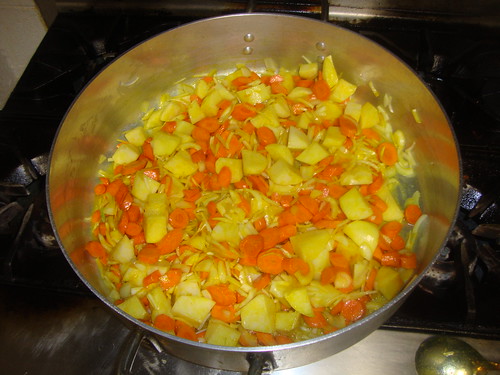
Dry red lentils were stirred into the misir watt base...
...while chopped cabbage was added to the atiklett watt.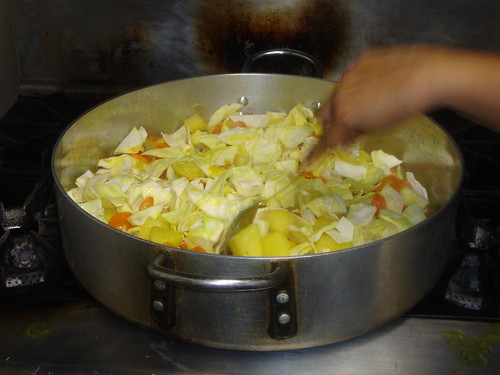
As the watts cooked (and filled the kitchen with the most amazing spicy/garlicky aroma), we learned how injera is made. Injera is the pancake-like bread with which all Ethiopian food is eaten. It’s spongy and tangy-tasting, made primarily of teff flour (though Blue Nile uses a blend of teff and four other flours) and water, and the batter must sit out and ferment on the counter for three full days.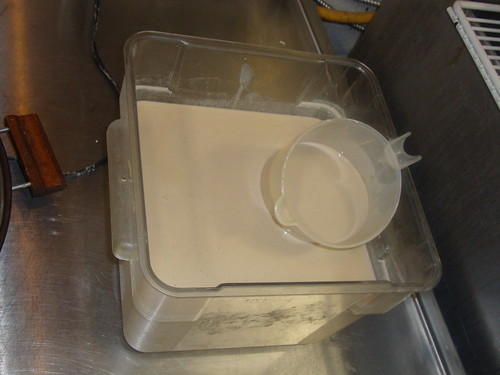
It’s cooked on a flat, non-stick surface by pouring the batter in a circular shape, starting on the outside and looping inward.
It's then covered and allowed to steam briefly. Each huge injera only takes about 30 seconds to cook.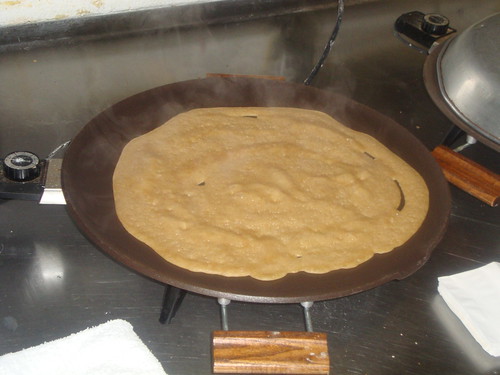
We were given the chance to try it for ourselves. There I am, makin' injera like a pro. The consistency reminded me of crêpe batter. I did rather well, if I do say so myself.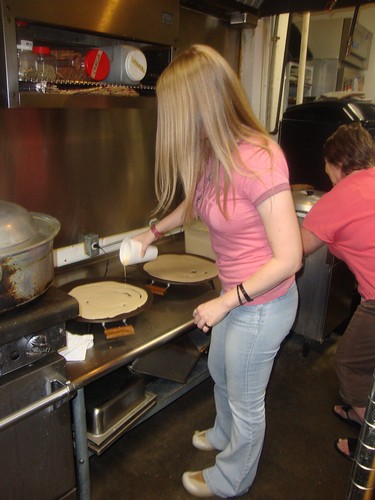
In mere minutes, we'd made a giant stack of injera.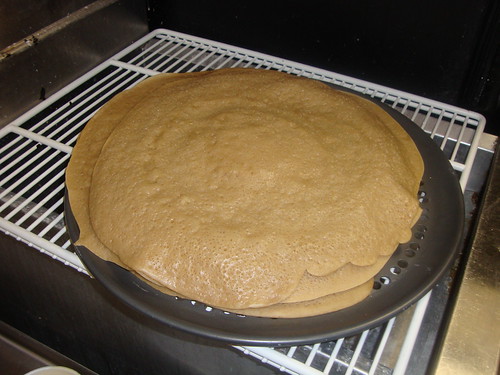
By then, the lentils were cooked through and the misir watt was perfectly thickened...
...and the potatoes in the atiklett watt were tender.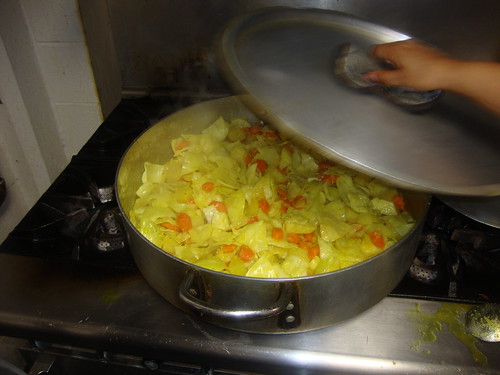
Some finishing spices (like cardamom and mekelesha) were added to both dishes, and they were complete. So we feasted! And ohhh man, it was DELICIOUS.
But where are the actual recipes? you may ask. Well, you’ll just have to check back here soon—I made the misir watt at home recently, and will be posting about it shortly. In the meantime, you can check out Hillary’s atiklett watt entry.
THANK YOU AGAIN to Blue Nile Café for putting on such a great class!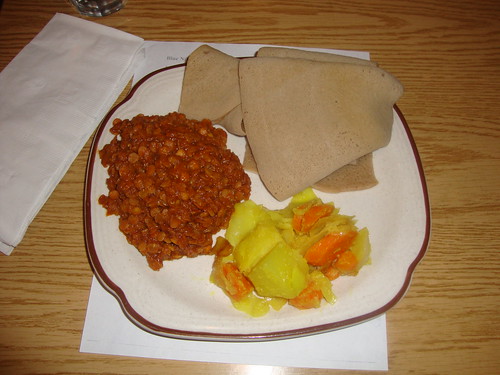
If you like this, you might also like...
Falafel night + V-Day dinner
Vegan Italian Valentine feast
A vegan taste of India






I've only had Ethiopian once before - and it was this exact dish! It looks delicious! It sort of creeps me out to know that the bread ingredients sit out for three days, but your pour looked awesome!
ReplyDeletethe fact that you can just whip up Ethio food makes me just wanna move in with you :)
ReplyDeleteThis class was so much fun! I can't wait to give the misir wat a try....
ReplyDeleteOh shucks, I've been meaning to try Ethiopian for about a squillion years now, all because I'm obsessed with trying injera. We even have a couple of apparently amazing Ethiopian restaurants in Canberra, and I still haven't been. *facepalm*
ReplyDeleteTrust you to remind me of this food desire of mine :D
That sounds awesome. I've always wanted to try Ethiopion food. Seems right up my alley.
ReplyDeleteAmanda—Haha, I know what you mean. But it’s actually really healthy for the flours to ferment like that. Intentional "spoilage"=good; go figure!
ReplyDeleteAverie—If you’re ever in Kansas City for any reason and you wanna grab some Ethiopian food, you’ll have to let me know! :]
Hillary—It was, wasn’t it? I’m so glad we went. I’ll be posting my at-home misir watt soon.
Hannah—You HAVE to try Ethiopian! Your fascination with injera is totally justified; it’s got to be the most unique bread-like product I’ve ever had.
Mandi—I highly recommend it! Not only is it wonderfully tasty, but it’s so nutritious too.